Foam! Truly this is mountain biking’s era of foam. No longer confined to the bit we sit on, there are now foam tyre inserts, vibration dampening foam-filled bars, rims filled with foam, and more recently foam fork volume spacers. Like this, the Deaneasy ABS Fork Tune tuning kit.
Deaneasy ABS Fork Tune
- From: deaneasy.it
- Price: €49.90
- Weight: 37.5g for all the foam in the kit, around 3.1g per puck
It comes in a water bottle, and is a bunch of foam nuggets that slide onto a foam rod then (almost) fill up the air chamber in your fork.
At this point, I should also mention the smaller foam spacer in the room: Neopos, which Wil reviewed last year and which I’ve also ridden with. While the two are similar in being foam fork volume spacers, Deaneasy claims their ABS Fork Tune is completely different to Neopos, and “takes advantages of more features and principles”, apparently allowing use of much lower pressures.
There are two versions, this one is the Comfort and Grip one, the other is a Race version. Their website doesn’t specify what the difference is, but I’m guessing the race version is firmer. Also, it’s red, so presumably makes you go faster.
Claims:
The ABS Fork Tune comes with some bold claims that I’m going to quote here:
- “Constant performance during intense use”
- “Virtually perfect vibration absorption on the handlebars”
- “Reduced friction thanks to the use of specifically supplied grease”
- “Volume reducer: increasing the progressivity of the air suspension”
- “Volume variator: depending on the internal pressure of the positive chamber”
- “Operating pressure of the positive chamber, lower than that provided for only AIR”
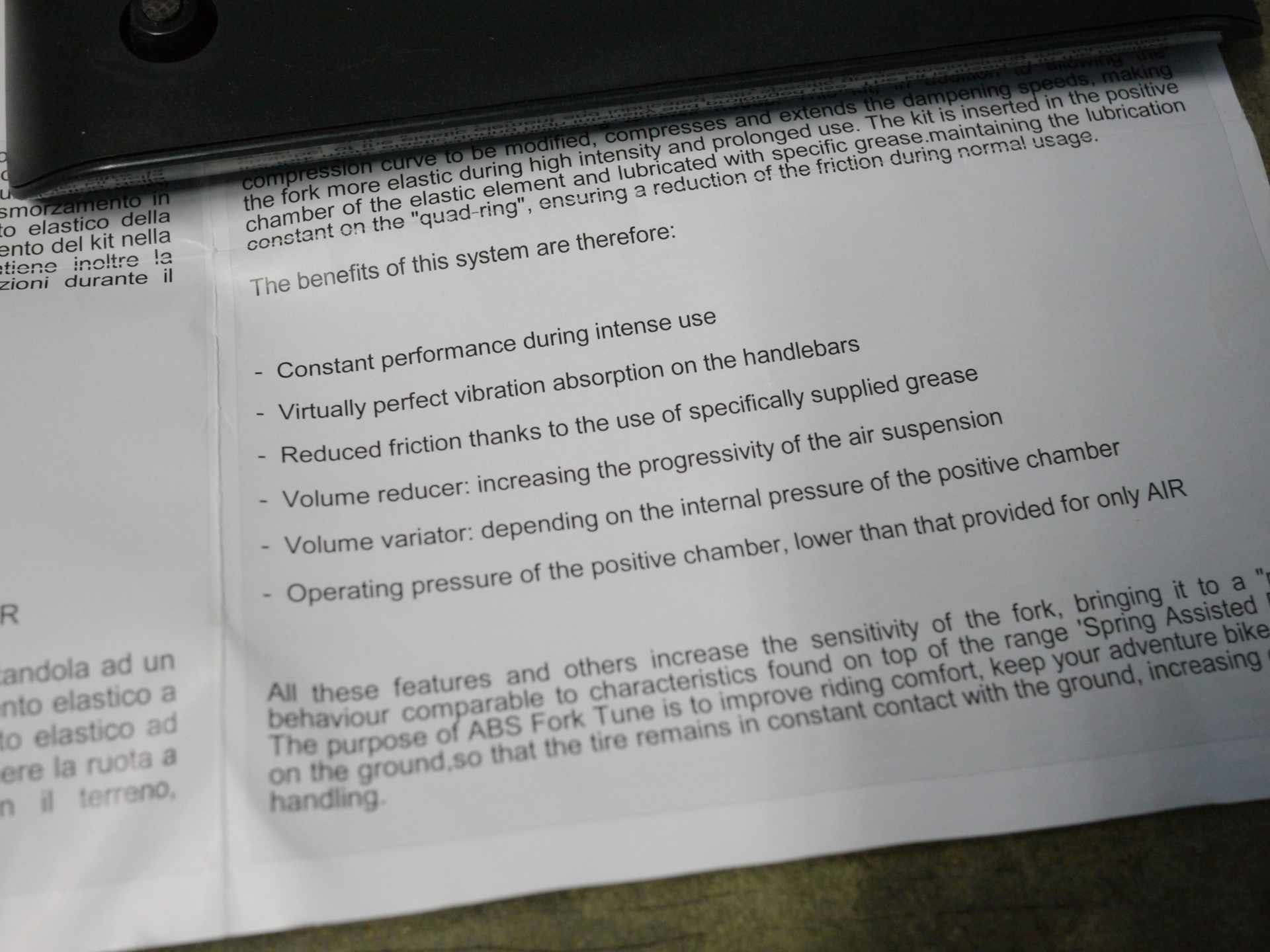
Going on this and the Deaneasy website, and given they’re Italian, I’m guessing they know English as a second language because some of the claims and phrasing can take a bit of deciphering.
Taking them in revese order: number six seems to be a suggestion – run slightly lower pressures with this spacer in than without. Number five, “Volume variator”, seems to be in reference to the foamy nature of the volume spacer: it squishes down as the air pressure around it increases, effectively becoming a smaller spacer the further into the travel you get. Three and four seem to be waffly versions of facts about volume spacers. Like any volume spacer, it reduces the volume, and increases progressivity.
As for “reduced friction thanks to the specially supplied grease”: there was no grease supplied, though it looks like they’ve started including their own, branded “DLube”, since they sent us this. They do specify SRAM PM600 Military or transparent silicone grease, because other greases have potential to destroy seals and other fork internals.
As for points one and two, well, they’re what the rest of this review will be about. The TL;DR? It kinda works, but it’s not exactly night and day.
Easy to be sceptical in the face of claims like these, but I wanted to give it a fair shake. On researching this, I also found out Deaneasy make the Air Liner for Vittoria, which is one of my favourite and most effective tyre inserts.
Installing It.
Putting this ABS Fork in is pretty straightforward, with one easy to mess up part. Which I did.
Basically, you need to string a load of the foam pucks onto the square foam rod, drop them into the open air chamber on your fork, then cut them to a length that leaves a 15mm space between the air top cap and the top of the spacer assembly. EXCEPT, I did this without the fork fully extended, so cut it too short. Easily fixed, if a bit jankily, by combining two lengths.
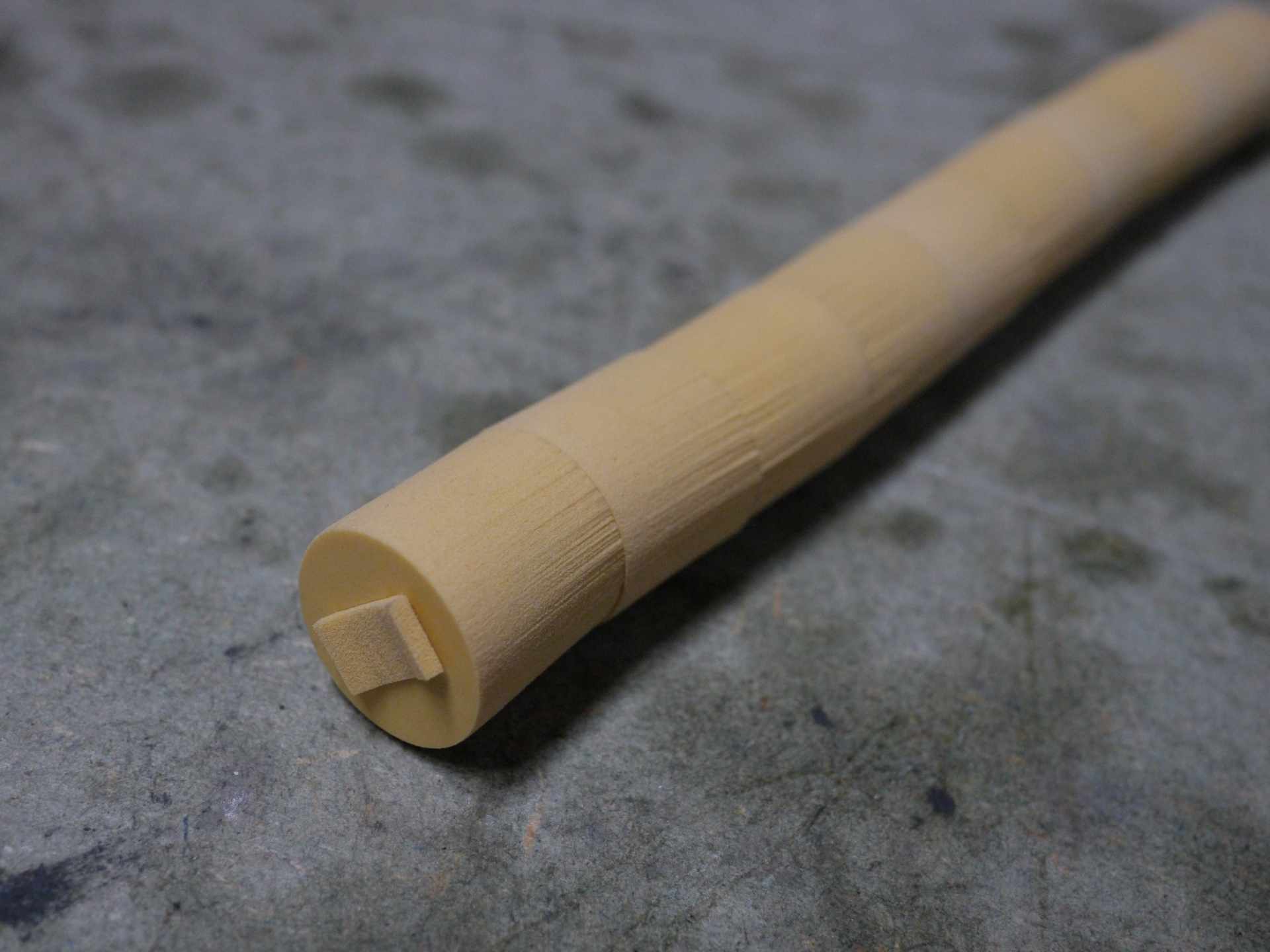
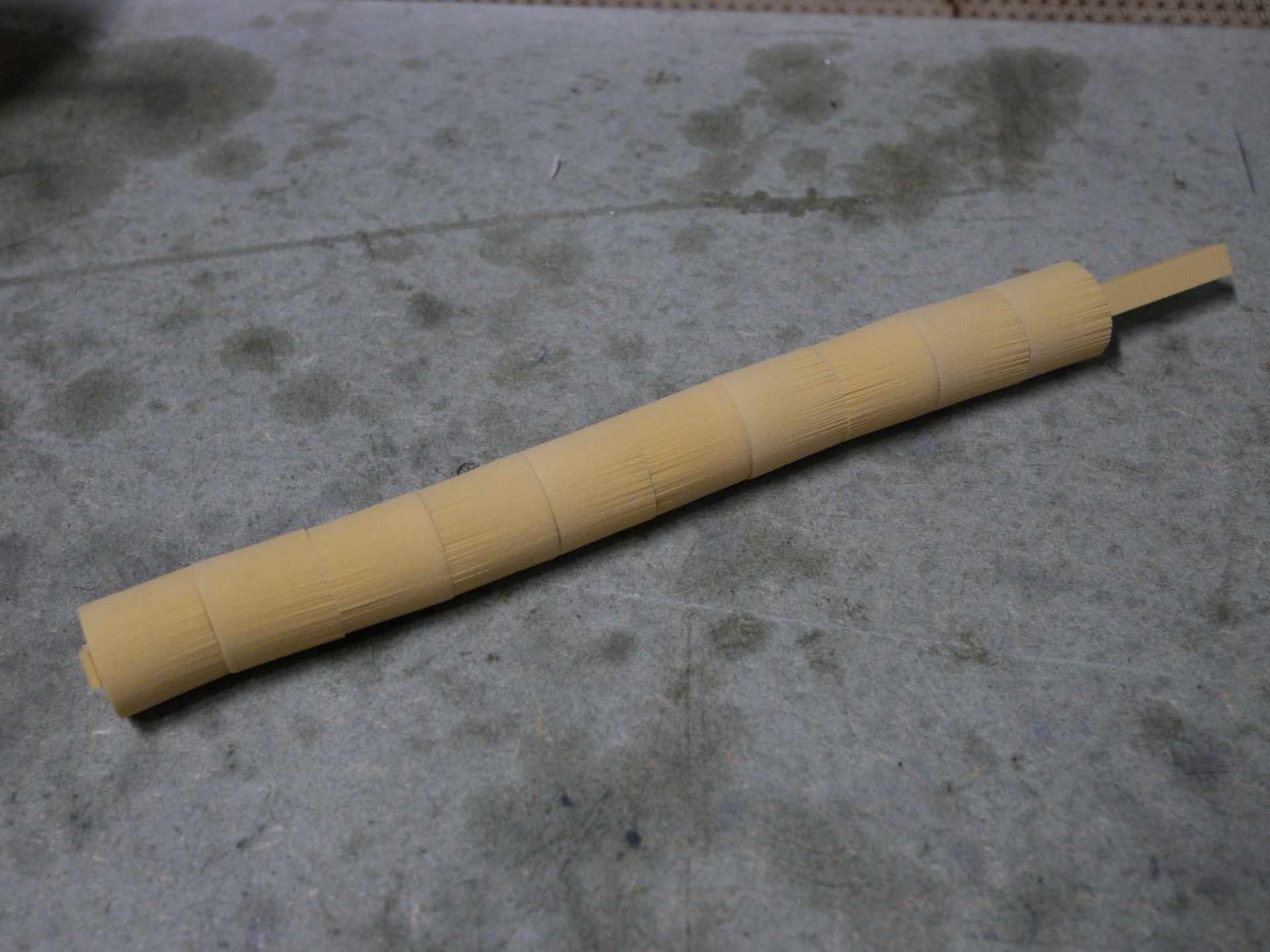
Like threading beads?
Other than that, pretty simple, just like adding volume spacers but with a coating of grease. They recommend PM600 or any clear silicone grease; I went with Buzzy’s Slick Honey because that’s recommended by most suspension manufacturers and unlikely to rot any seals.
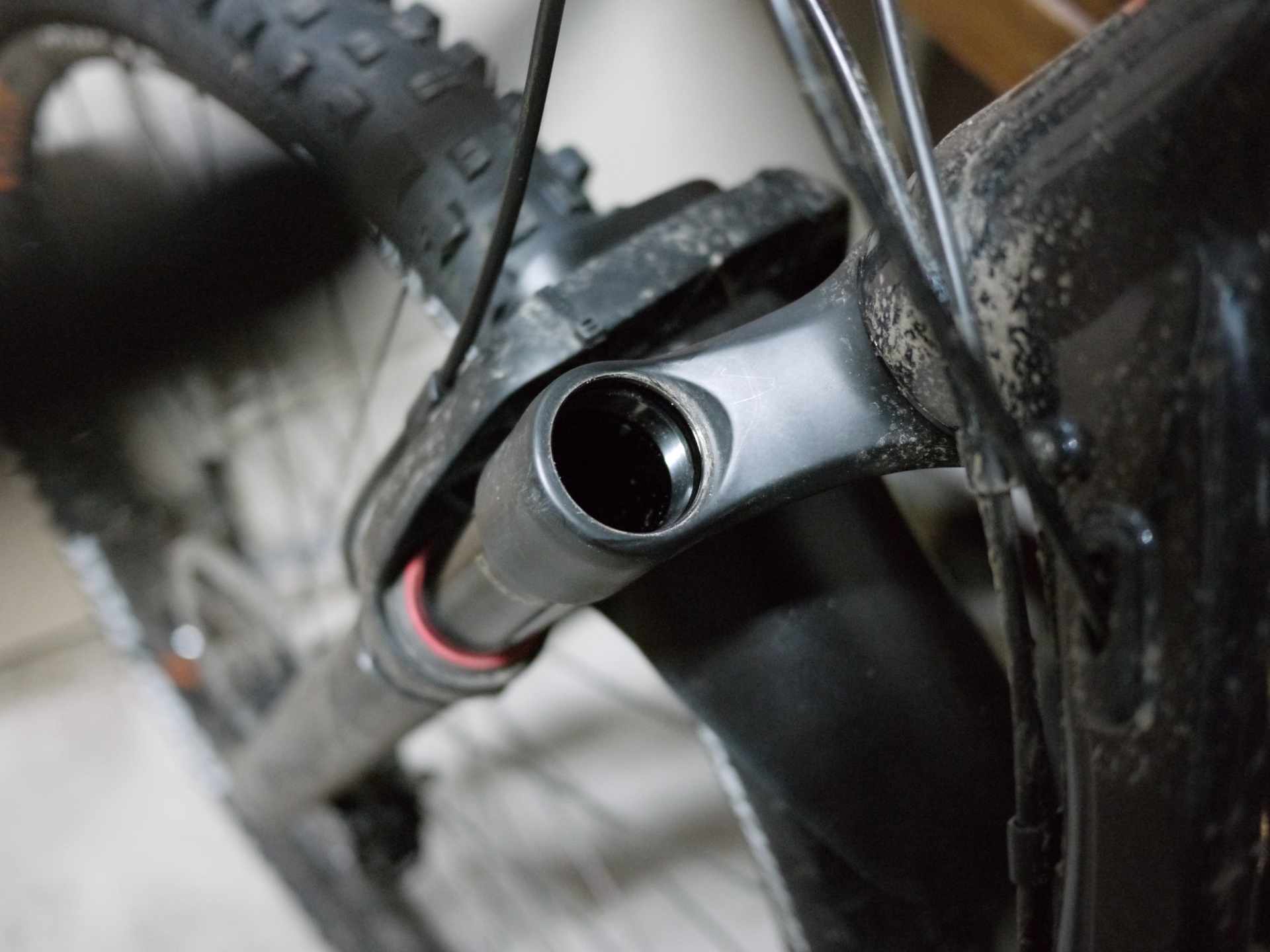
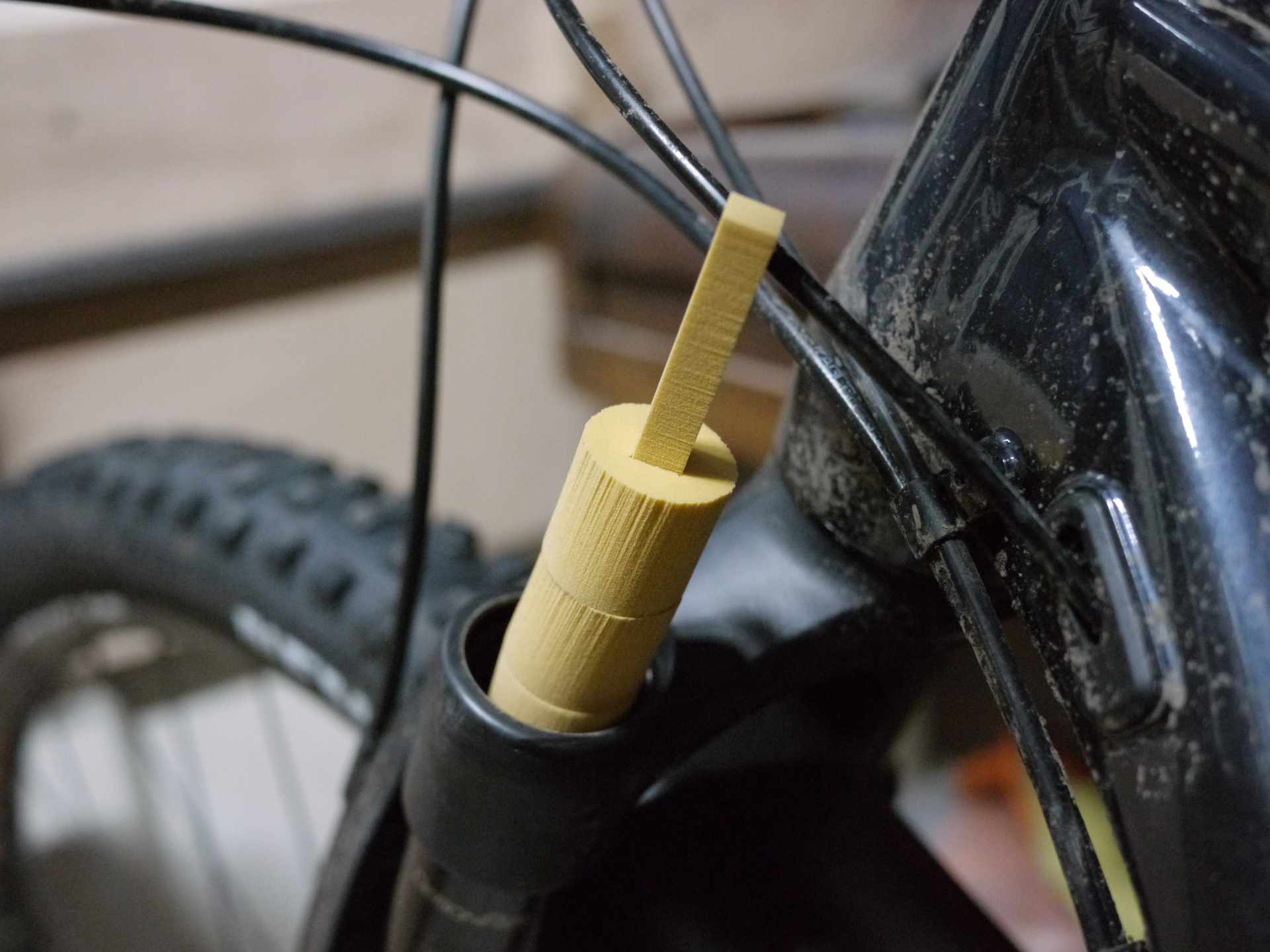
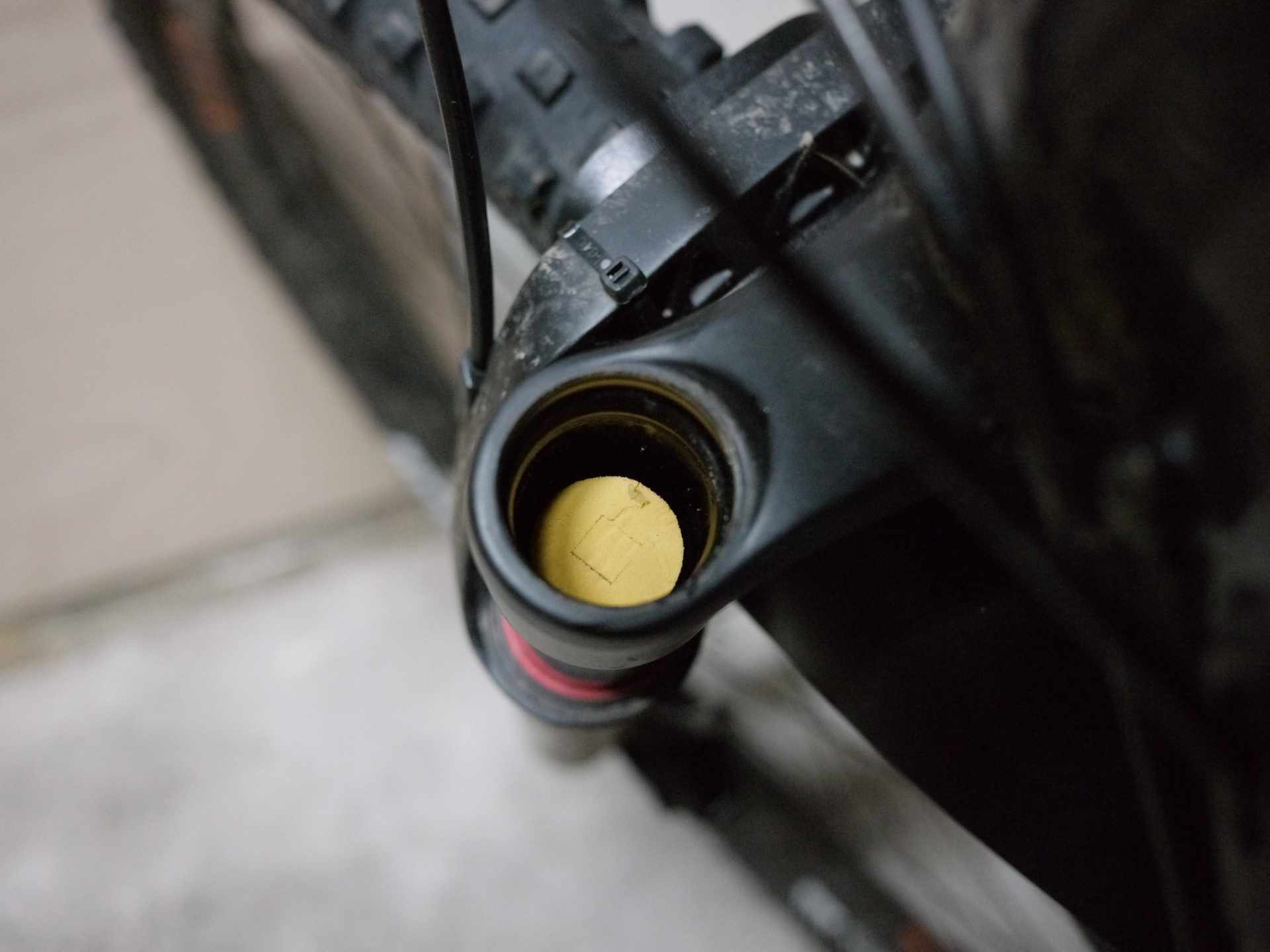
So: cut to length, cover in grease, drop into fork, pull crown and bridge to fully extend fork, secure top cap, and inflate to desired sag. The pulling step got pretty annoying in any forks that have a negative spring, or that can form a vacuum in the lowers.
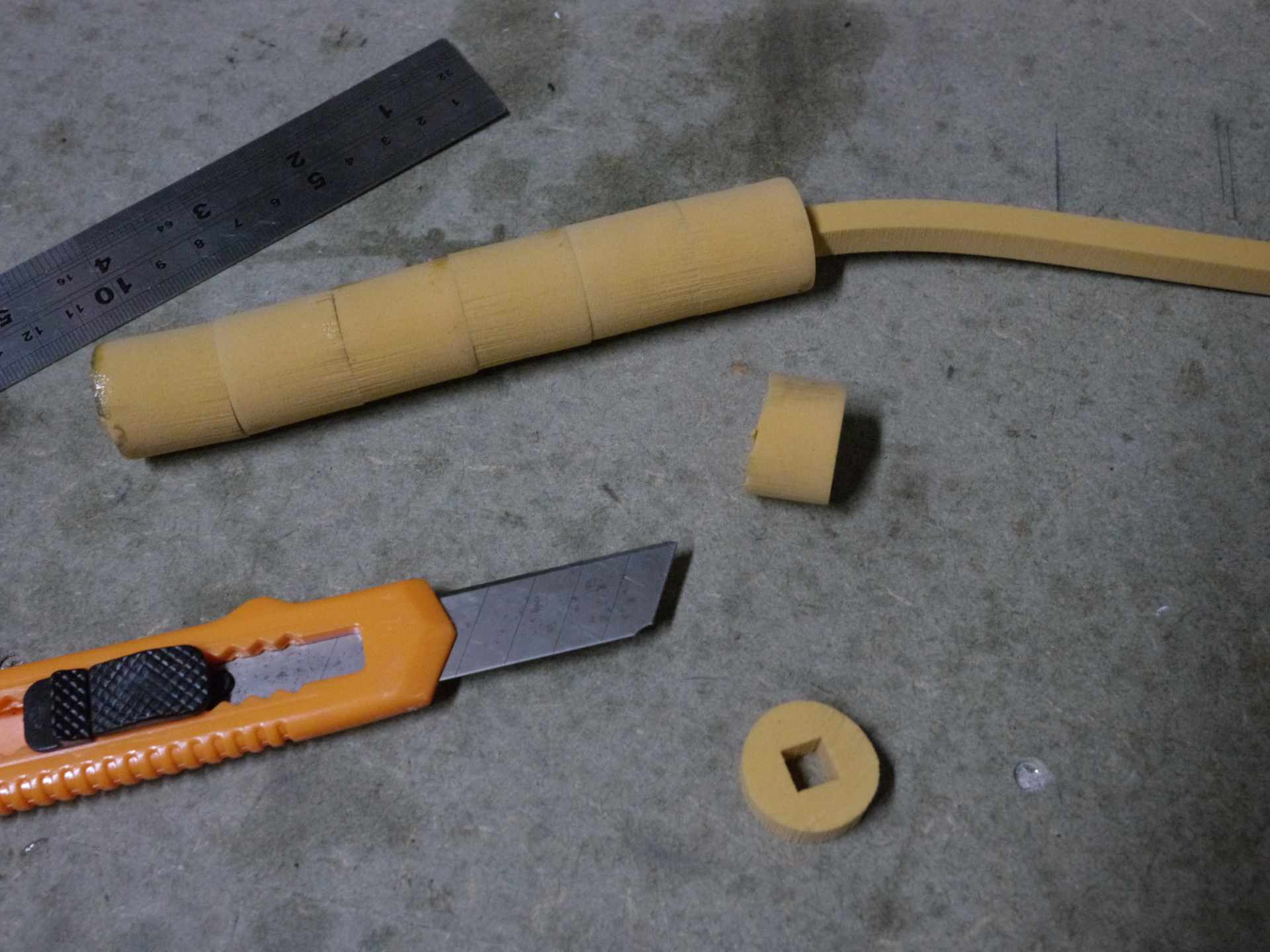
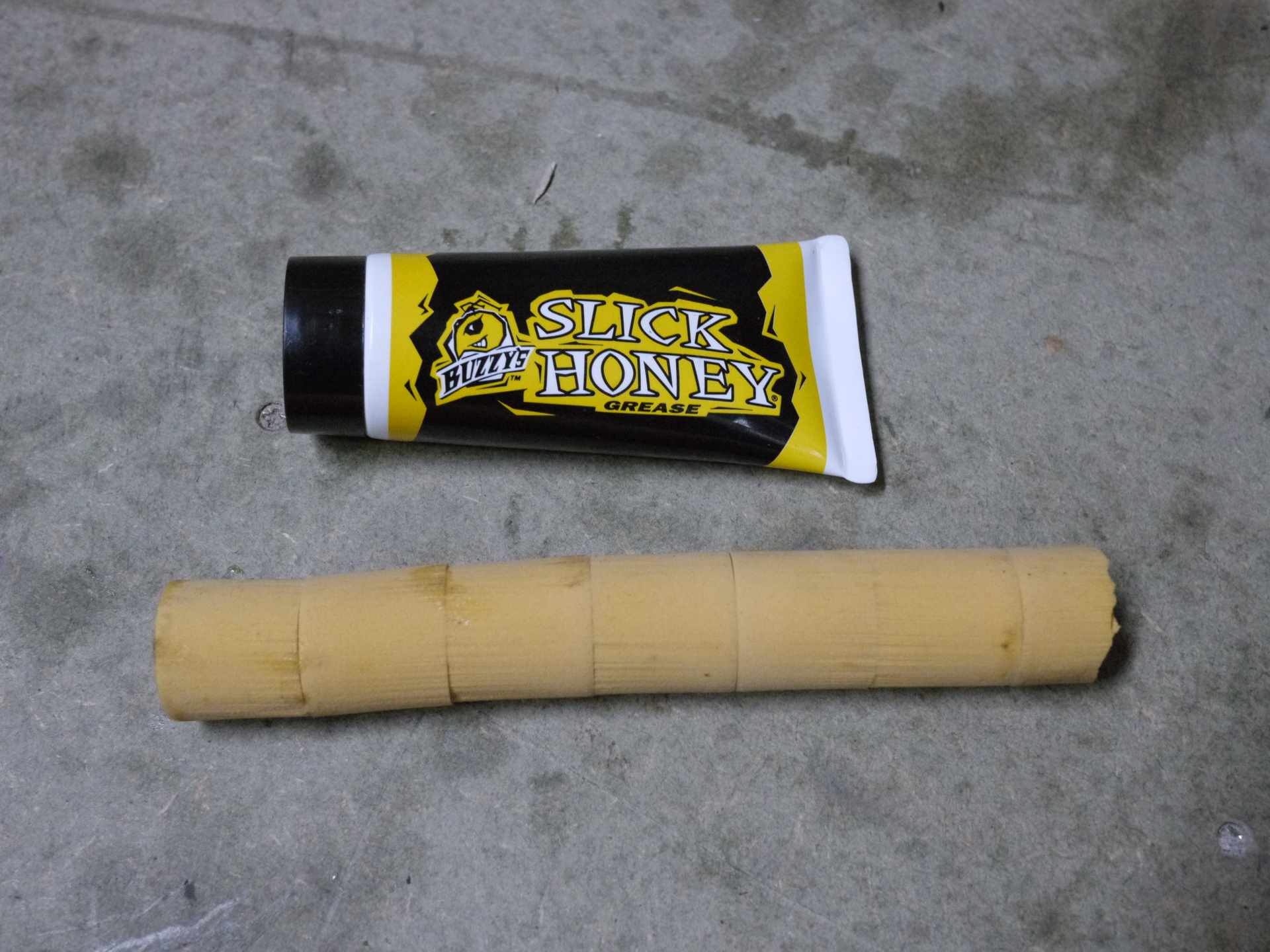
The one fork I didn’t test these with was a Formula 35, because they use oil inside the air chamber to do volume spacing. Grease, in it’s simplest forms, is basically oil with an emulsifier added. It might have turned out fine, especially as the damping circuits are in the opposite leg, but nonetheless I did not want to experiment with adding anything that might start emulsifying things inside my favourite fork.
Riding It.
Most of the testing for this was done in a 130mm travel RockShox Pike. Initially, I set it up with a pressure of 50PSI, which is about 15PSI lower than I’d normally run.
Doing back-to-back testing on the same hill, the fork did feel very supple, with good progressivity and no sudden ramp up. Generally, the effect of foam spacers is to flatten the suspension curve and, in comparison to an equal volume of non-squishy spacers, make it a little more linear without losing the progressivity of an air spring altogether.
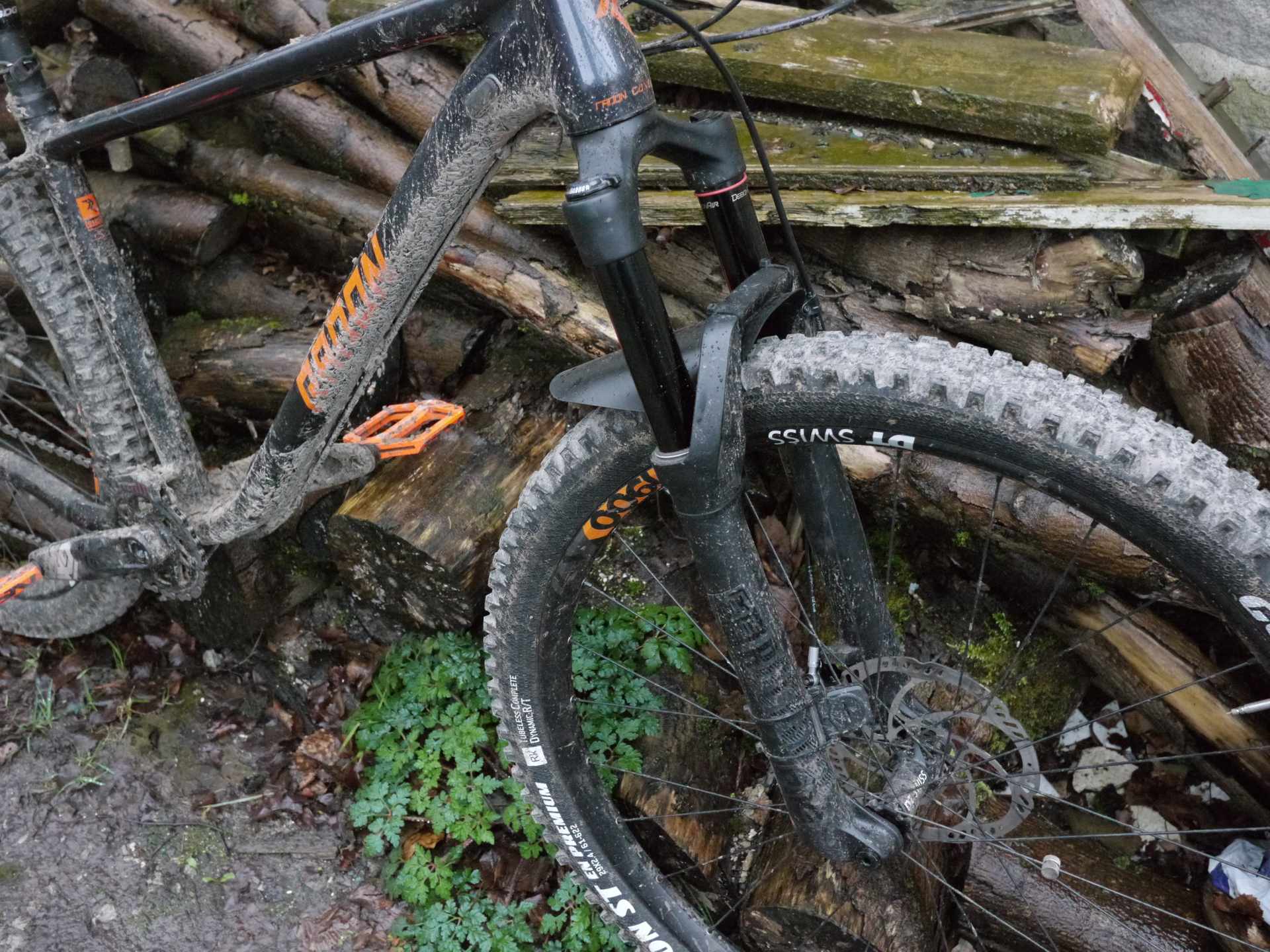
With ABS Fork Tune in and the pressure that low, I was consistently using most of the travel but not bottoming out. Comparatively, with two RockShox bottomless tokens in at the same pressure, it felt much harsher and blew through travel a lot more easily.
The Deaneasy foam was definitely letting the fork run at slightly lower pressures while making it a little more resistant to wallowing in the mid-travel.
However, that back-to-back test was some pretty easygoing trail – steep in parts but not ridiculously so, rocky but not a rock garden, and no big features. I was close to bottoming out on most runs, so for the variety of terrain I ride at home, I knew I’d need more pressure. At 62.5PSI, I had the required safety margin but suddenly, the differences between Deaneasy and regular spacers were less obvious.
At all pressures, any vibration dampening it was doing wasn’t immediately apparent. I’m not saying it doesn’t, but I take exception to “virtually perfect vibration absorption” when things like Vibrocore handlebars, RevGrips and even just thicker grips have made immediate and more noticeable differences to my comfort. Whatever the ABS Fork Tune was doing in that respect, I couldn’t say I was ever conscious of it. Again, any effects it had on grip seemed smaller than, say, running a favoured wheelset or front tyre.
Over time, through back-to-back tests with this and Neopos, I’ve found foam spacers seem to smooth out the harsher extremes of big and high-speed fork compressions. That does translate into a smidge more tyre-trail contact and slightly better grip, but not so much my brain sings about the difference.
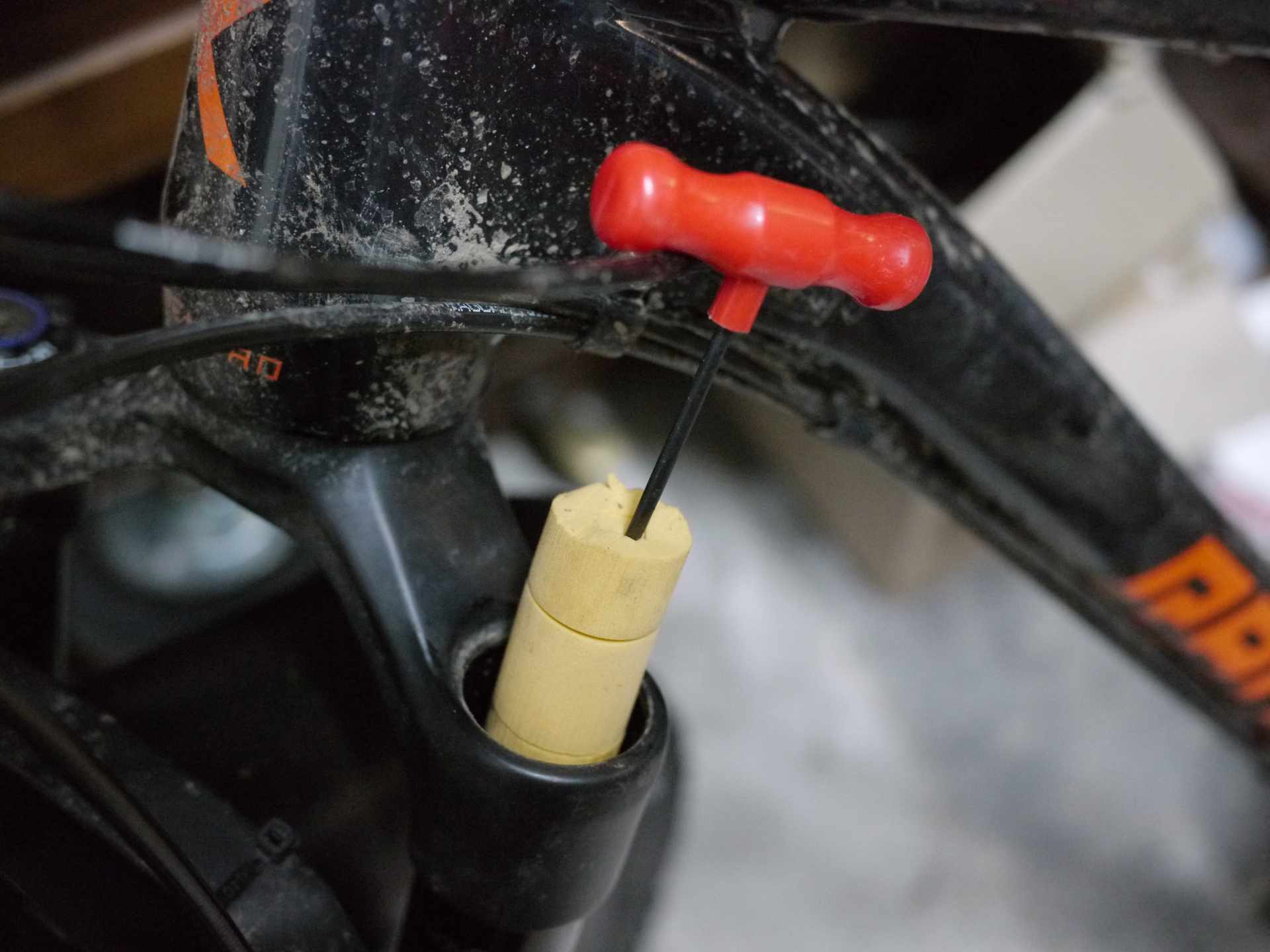
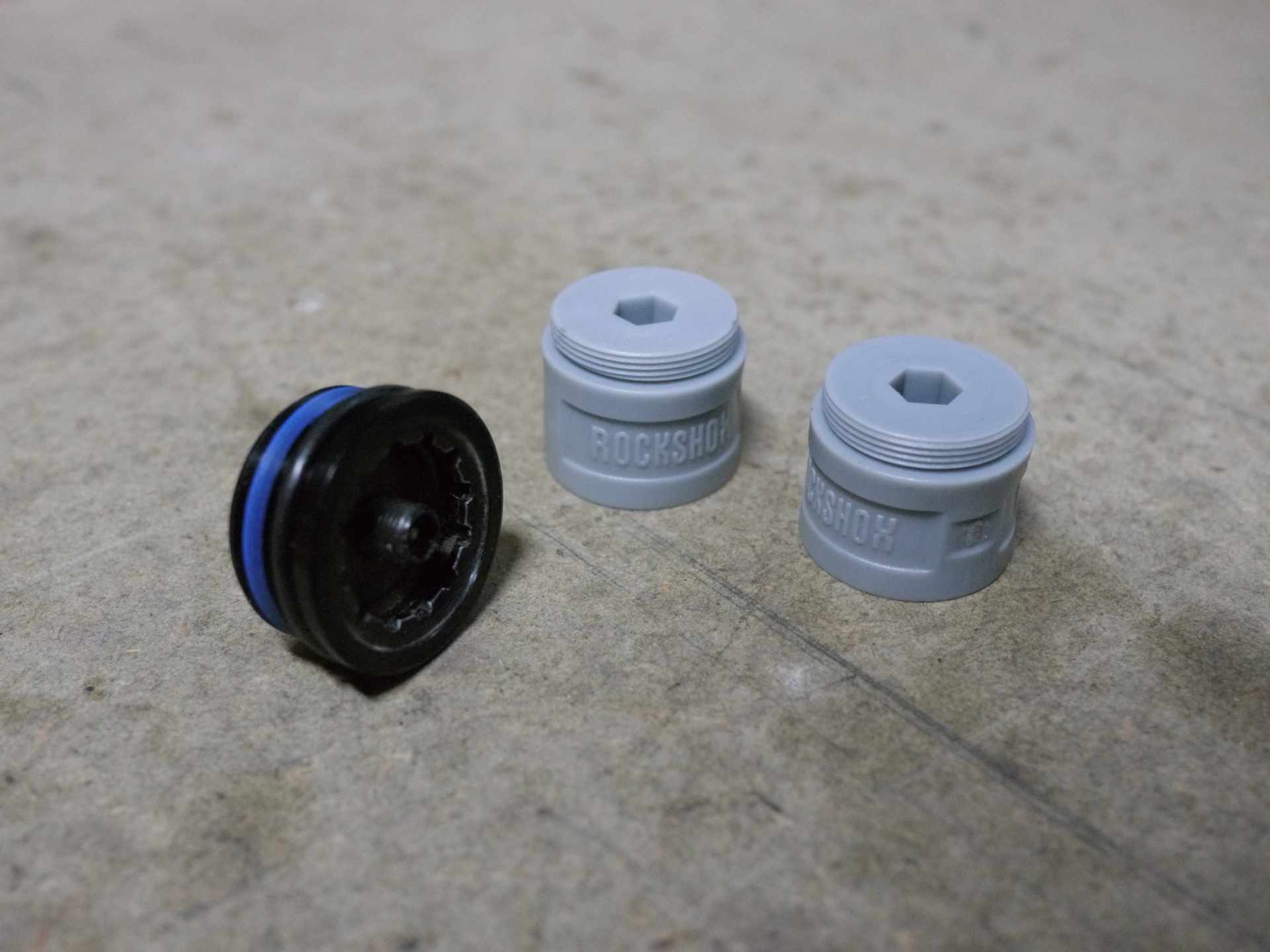
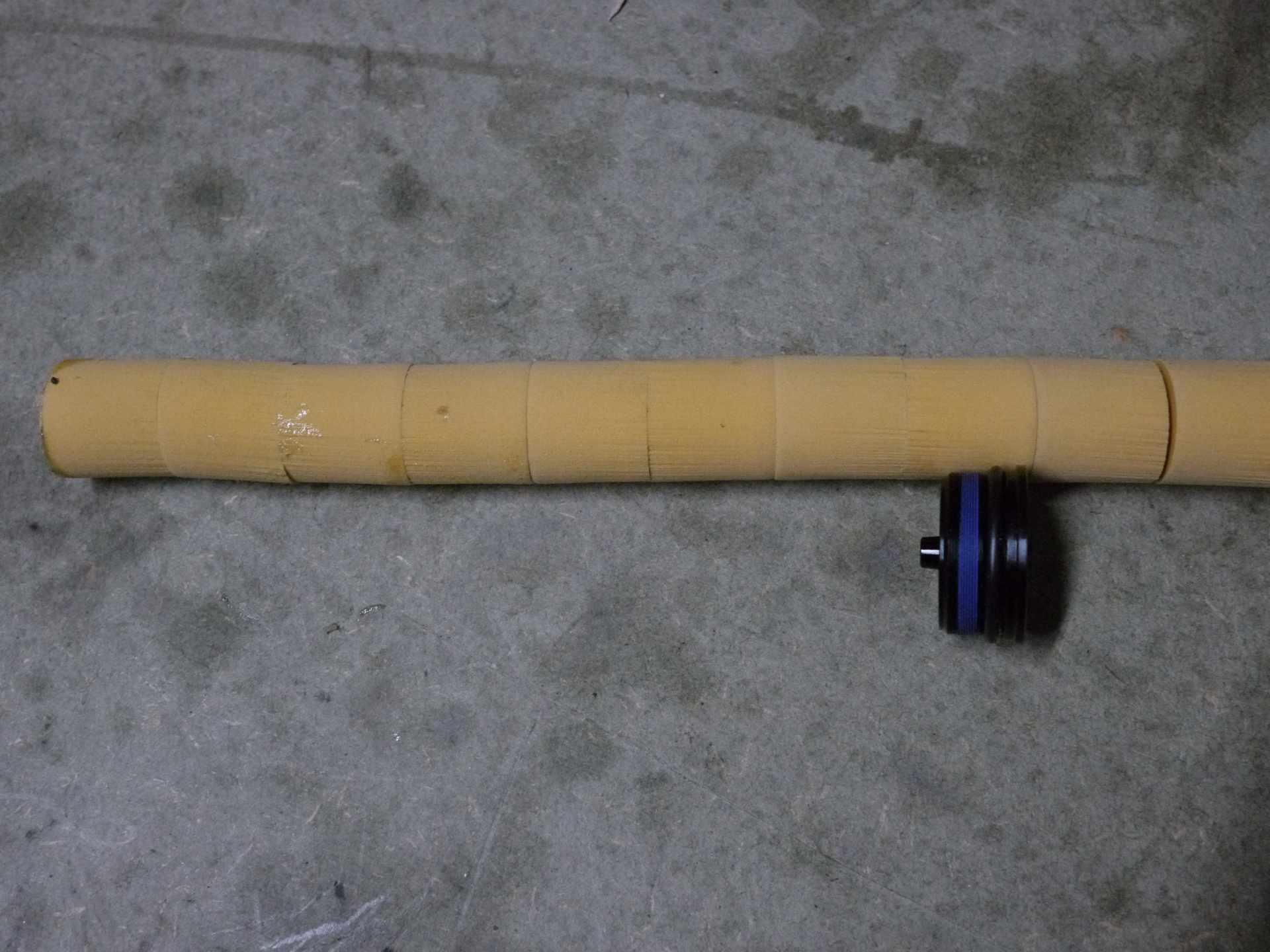
Some Faffage
In the end, I removed the ABS Fork Tune, rode the bike a few times, and chose not to put it back in. Mostly that was through some combination of finding it annoying to pull on the fork while screwing in the top cap, and not massively noticing what it was doing without back to back comparison runs. I definitely wouldn’t say Deaneasy’s claims aren’t true, but it does feel like they’re overselling it a bit.
Overall.
The ABS Fork Tune does a fair bit of what Deaneasy claims, but no so much I notice when it’s not in there. Whether it’s comfort or grip you’re looking to increase, there are other bike components that’ll make a bigger difference… but they are more expensive.

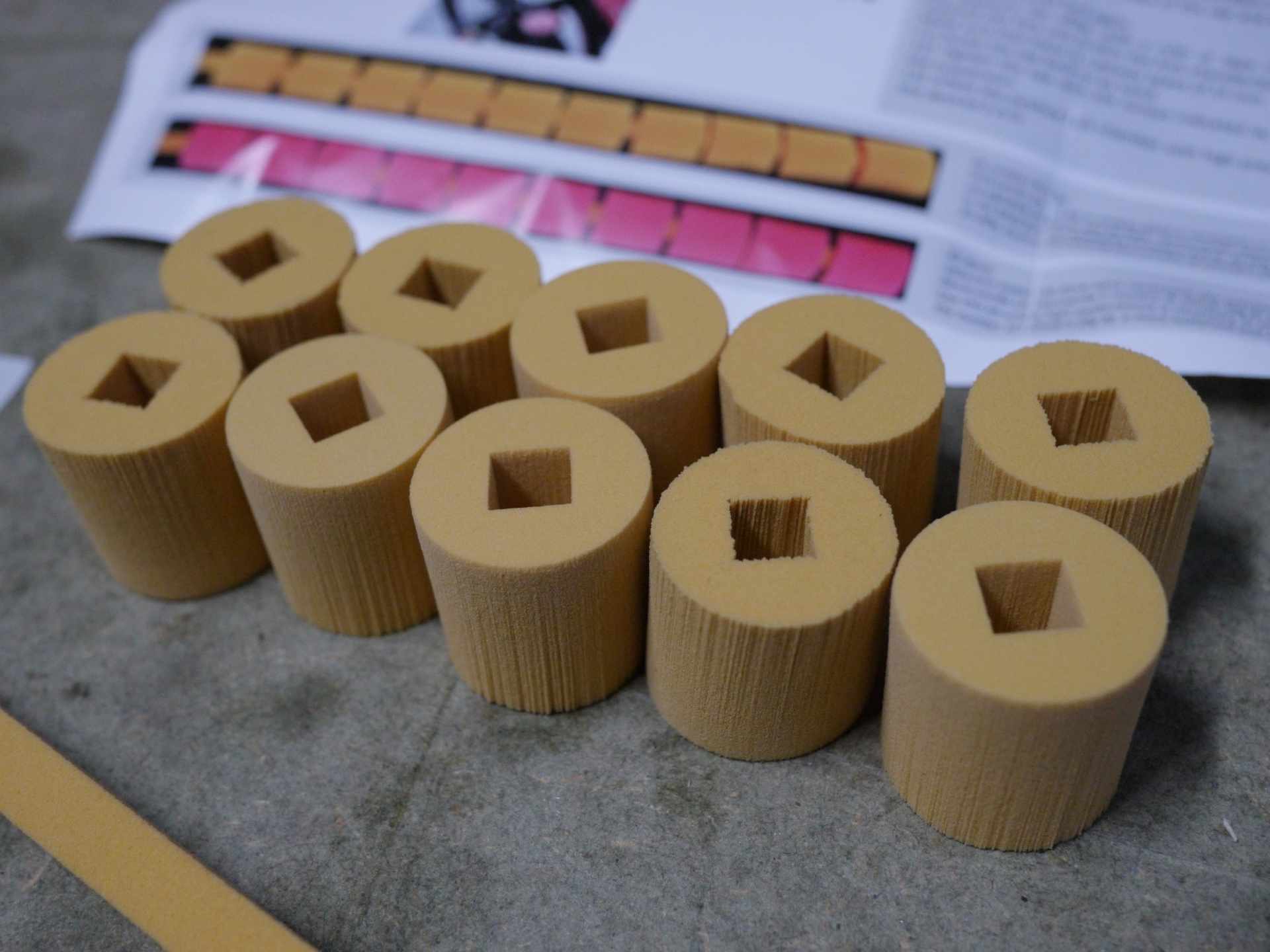

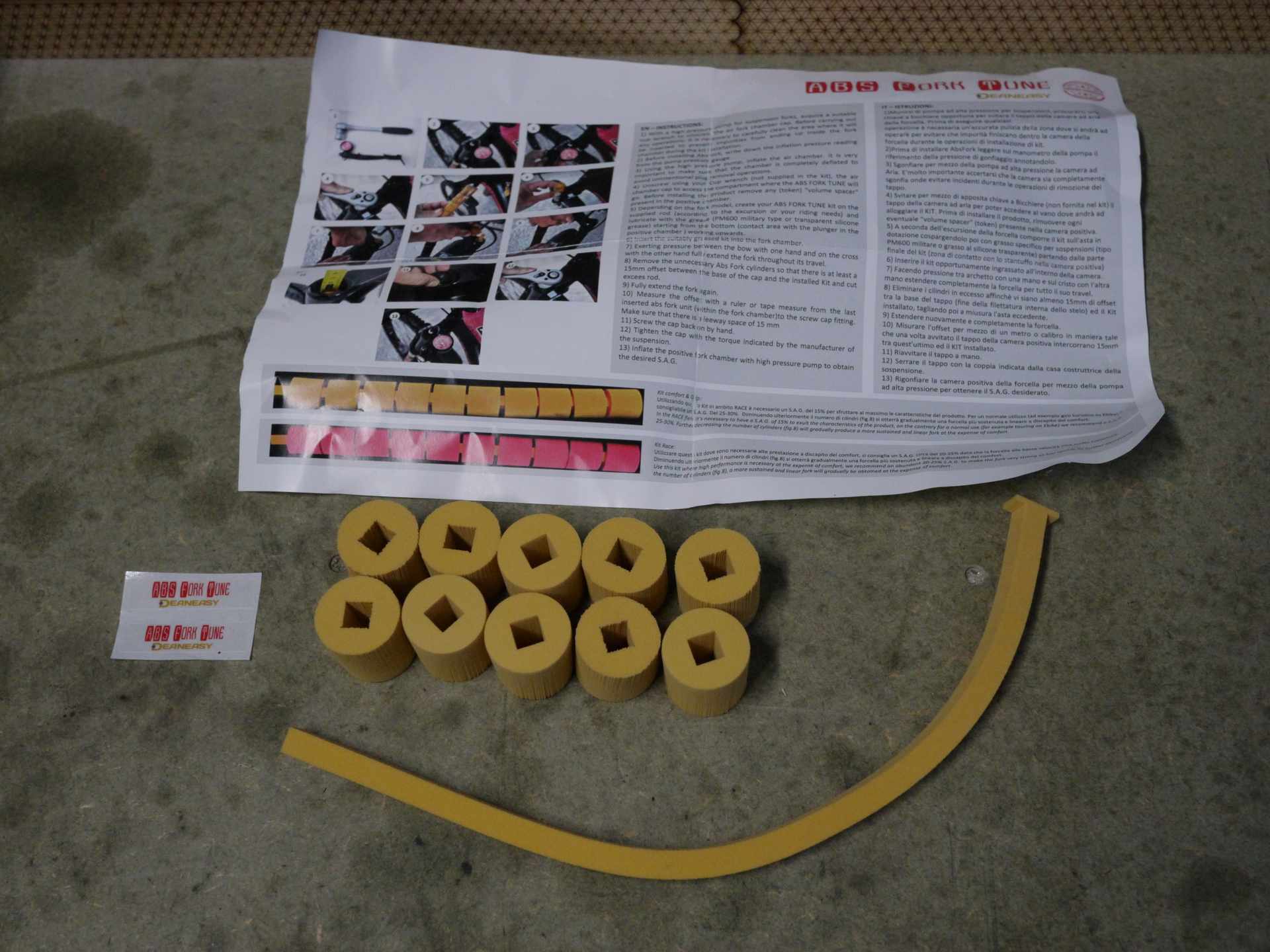




Fox call for 3cc of gold in the air chamber so same concerns with emulsification I guess.
I cant see that you could run these in your air chamber without something getting chewed up or scored over time.
Neopos style foam on a plastic core that you can clip on to your air side top cap in the same way you would a factory token/volume spacer. Keeps it out of the oil and away from any slidy parts.
Ahh, gold, that’s why they are so expensive…
What kind of spring does that Pike have? I’m a hardtail rider (BTR Ranger) with a relatively simple single air chamber fork (Magura TS8). I mostly stand up and may have relatively much weight over the front (they call it “aggressive” in popular lingo) and I feel my arms are getting a much heavier beating than my legs. Which is obvious as legs are stronger, but I am interested in making the fork a little smoother through the stroke. I would think that if that Pike already has a negative air chamber, running something like ABS contributes less to an already relatively linear fork than to a single air chamber fork like mine. Any thoughts on this? Or was the Pike fork with a single air chamber already? Sorry I don’t know the specs for all forks out there so maybe there is no such thing like a Pike with a negative air chamber anyway ;).